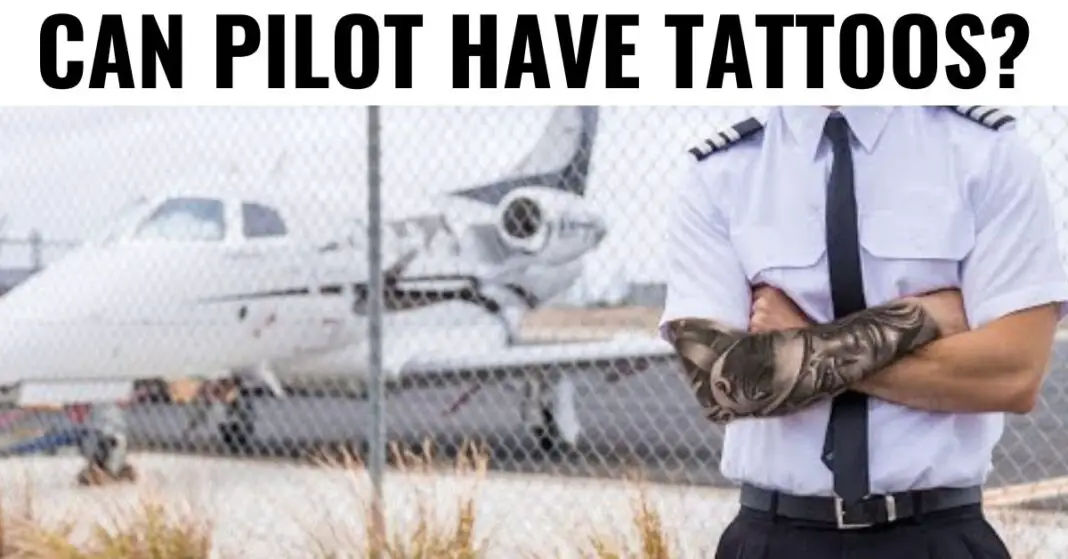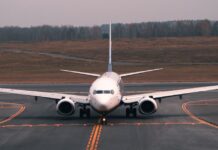Wondering if pilots can have tattoos? It’s a mix of rules and opinions. Different airlines have their say on this, and it often depends on where you are and the company’s policy.
Tattoos, being a mix of personal style and work rules, can affect a pilot’s job journey. Some airlines are cool with tattoos, while others might not like them much. The common theme? Airlines usually prefer pilots whose tattoos stay hidden when they’re in their uniform.
Let’s dive into the details in our blog, “Can Pilots Have Tattoos?”
Table of Contents
Airline requirements and restrictions
For many folks, tattoos are more than just ink embedded in the skin. They’re marks of personal tributes, badges of achievements, or simple expressions of individuality and creativity.
With the growing acceptance of body art in most professional industries, you might ask – what about the world of aviation? Can pilots have tattoos? The answer is a hard “maybe”. Let’s soar into the restrictions airlines can impose on pilots regarding tattoos.
Firstly, understanding the job role is crucial. Pilots are the image of an airline. They’re the brilliant faces behind those sky-high operations. They not only maneuver the massive machines flying us across time zones but also create a bond of trust with passengers. So, appearance matters; hence, airlines can have policies in place regarding body art.
However, a blanket no-tattoos rule wouldn’t be accurate. The actual restriction lies in the ‘visibility’ of the tattoo. Essentially, as long as the tattoo stays hidden while donning the uniform, airline companies usually have no objection. This means tattoos on the arms, neck, face, or hands – the visible areas while wearing a short-sleeved uniform – are usually a no-go.
Now, the rule seems straightforward, but it’s not a globally standardized one. Each airline carries its set of tattoo guidelines. For instance, Air New Zealand has eased its tattoo restrictions, even allowing ‘non-offensive’ visible tattoos, signifying a progressive stance in honoring cultural significance. However, the eagle-eyed Ryanair has a clear-cut policy against visible tattoos.
The crux lies in understanding the ‘does it make sense’ factor. No tattoo should under any circumstances be offensive, inappropriate, or disrespectful. That includes symbols, language, or imagery that could stir up controversy. Remember, pilots are ambassadors for their airlines, and controversial tattoos could affect the company’s reputation.
For those ink-enthusiasts keen on sailing in aviation, fear not – the full-sleeve is a saving grace. Full-sleeve shirts covertly camouflage your tattoos, making your hobby a non-issue. However, do remember that in torrid weather conditions, you might not have the luxury of slipping into a short-sleeve.
Effects of tattoos on a pilot’s career
Just as a canvas comes to life with an artist’s brush strokes, the body becomes a living, breathing masterpiece with the artistry of tattoos. While this form of self-expression is generally accepted in many professional fields, one profession stands out for being particularly strict when it comes to tattoos – aviation.
The trajectory of a pilot’s career might hit turbulence when it comes to ink, but it doesn’t necessarily mean a crash landing. It’s a rather complex airway to navigate, with factors like corporate policies, cultural perceptions, and even the position of the tattoo playing a significant role.
Large airlines typically swing more conservatively on the scale when it comes to tattoos. There’s a high emphasis on maintaining a neat, professional image, largely influenced by the public’s perception.
You’ll often find rules stipulating that tattoos cannot be visible while in uniform. However, don’t be too quick to abandon dreams of cruising through blue skies. The interpretation of ‘visible’ varies widely, offering a grey space where tattooed pilots can find room to maneuver.
The rules for the prevalence of tattoos among pilots change from airline to airline. Some have rigorous policies against visible tattoos, while others allow body art as long as it’s concealed beneath the uniform. Certain carriers neither encourage nor discourage tattoos but require them to be covered while on duty. This diversity in regulations generates both challenges and opportunities for pilots with tattoos.
Steering clear of body art that could cause controversy or misunderstanding is key within the aviation world. Without a single governing body for the worldwide airline industry to specify which tattoos are acceptable and which are forbidden, each carrier crafts its policies. Anything that could potentially offend passengers or portray the airline in a negative light is generally a no-go.
Though wearing a long-sleeved uniform might be uncomfortable in warmer climates, it offers an easy route for those with arm tattoos to stay by airline policies. An extra layer between skin and uniform also helps create a uniform appearance among the crew.
Can pilots have full sleeve tattoos?
Although many prominent airlines prohibit the display of visible tattoos, pilots with full sleeves may still be able to fly if they can conceal them entirely beneath their uniforms. Airline regulations differ, with some being more stringent regarding tattoo content and taking regional factors into account.
Keep in mind that covered tattoos might necessitate specific shirt styles, and in certain cases, removal could be an alternative. Ultimately, the decision is yours, but it’s important to be mindful of potential career restrictions before getting tattooed.
Can Air Force pilots have tattoos?
Air Force pilots are permitted to have tattoos but within certain limitations. Ink is acceptable on the inner forearms, hands, and a single finger band, as long as it remains concealed under the uniform.
Size and content are important considerations – offensive images or anything larger than 1×1 inch on forearms/hands or 3/8 inch on fingers are not allowed. Given that policies may be subject to updates, it’s advisable to verify the current regulations before getting a tattoo. The process may also involve obtaining medical clearance, and there might be provisions for tattoo removal.
Do pilots have to cover their tattoos?
When it comes to commercial airlines, the rule is “conceal or congeal.” Tattoos, particularly those on the face, neck, hands, or forearms, should be hidden beneath layers of the uniform – think long sleeves and high collars.
While some airlines tolerate discreet wrist or ankle tattoos, offensive ink is strictly prohibited. In the realm of private jets, the atmosphere is more relaxed, but professionalism remains crucial.
For military missions, strict regulations are in place. Tattoos on the head, neck, and hands are not allowed, with only small, concealed tattoos on forearms or ankles sometimes receiving clearance. Content is also a consideration – offensive symbols or extremist art are not permitted.
Does the FAA have a tattoo policy?
Although the FAA doesn’t directly pen tattoo regulations for pilots, each airline crafts its policy. Many choose to cover visible tattoos, particularly those on the face, neck, hands, and forearms.
Long sleeves and high collars serve as effective invisibility cloaks. While certain airlines may allow discreet wrist or ankle tattoos, offensive designs are universally prohibited. Cargo or charter pilots might experience more lenient regulations, and regional perspectives on tattoos can further shape the policy landscape.
Why can’t pilots have visible tattoos?
The restrictions on visible tattoos for pilots observed in most airlines and some military branches, stem from a variety of interconnected reasons.
First, there’s a focus on professionalism and public perception, as airlines aim to maintain a polished image to passengers, who might associate visible tattoos with a lack of professionalism. This perception can impact passenger confidence and trust.
Additionally, cultural sensitivity plays a role, as airlines operate globally and aim to respect diverse cultural norms and attitudes towards tattoos. Maintaining a consistent company image is another factor, as airlines carefully cultivate their brand, and visible tattoos on pilots might clash with this image.
There’s also a concern about potential discrimination, with visible tattoos possibly leading to bias based on sensitive topics. In the military, operational concerns are raised, suggesting that tattoos might affect a pilot’s focus or interfere with emergency equipment.
Lastly, the evolving landscape of attitudes towards tattoos is acknowledged, with some airlines becoming more lenient, and policies varying based on tattoo size, location, and content.





